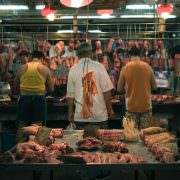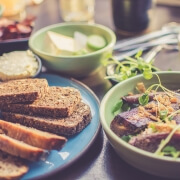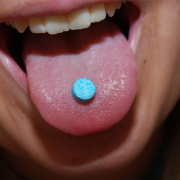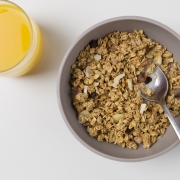Het welles-nietes spelletje rondom zoetstoffen in light frisdranken blijft zich voortzetten en echt vertrouwen krijgen we niet in deze stoffen. Want waar rook is, is immers vuur. Toch? Om opheldering te krijgen is de online diëtist weer in de wetenschappelijke literatuur om precies te zijn. Met als enige vraag veilig of niet veilig?
Welke zoetstoffen worden gebruikt in light-frisdrank?
Tijdens mijn speurtocht langs de etiketten kwam ik op de volgende zoetstoffen uit: aspartaam, acesulfaam-K, sacharine, sucralose en cyclamaat. De meest voorkomende zoetstoffen die worden gebruikt om frisdrank zoet te maken zonder suiker te gebruiken. Intensieve zoetstoffen genaamd die 50 tot 500 keer zoeter zijn dan suiker en zo goed als geen calorieën bevatten (1-2).
Wat zeggen onderzoeken over deze zoetstof?
Waar rook is, is vuur. Daarom is het verleidelijk om deze zoetstoffen als boosdoener te zien. Echter kan in mijn ogen in de zaak rondom zoetstoffen maar één conclusie gegeven worden. Binnen normale doseringen zijn deze stoffen simpelweg veilig. Dat zeg ik niet op basis van lukraak verzamelde informatie, nee dat zeg ik naar aanleiding van gronding onderzoek. Te beginnen met aspartaam. Aspartaam levert geen gevaar op voor de gezondheid of het ontstaan van kanker (3,4,5,6,7,8,9,10,11,12). Ook bij acesulfaam-k zijn geen bijwerkingen gevonden (13-14). De onderzoeken naar sucralose wijzen precies hetzelfde uit (veilige stof) (15,16,17,18,19,20) en dat geldt ook voor cyclamaat (21,22,23).
Veilig ja of nee?
Ja (dat overigens niet betekent dat je het nodig hebt, want nuttige voedingsstoffen bevat light-frisdrank namelijk niet)
Bronnen
- De jong, F.M. Ons Voedsel. ‘S-Graveland: Fontaine Uitgevers BV; 2008.P.124-126
- Van den Berg,Y & Botermans,M. De veiligheid en schadelijkheid van e-nummers. VL&DB Uitgevers. Allergieplatform.P.21-23
- Magnuson, BA et al. Aspartame: a safety evaluation based on current use levels, regulations, and toxicological and epidemiological studies. Critical Reviews in Toxicology. 2007. Beschikbaar via:http://www.ncbi.nlm.nih.gov/pubmed/17828671
- EFSA. European Food Safety Authority. Aspartame. 2013. Beschikbaar via:http://www.efsa.europa.eu/en/topics/topic/aspartame
- Butchkoa, H.H et al. Aspartame: review of safety. 2002. Beschikaar via: http://www.ncbi.nlm.nih.gov/pubmed/12180494
- EFSA. Updated opinion on a request from the European Commission related to the 2nd ERF carcinogenicity study on aspartame, taking into consideration study data submitted by the Ramazzini Foundation in February 2009. 2009. Beschikbaar via: http://www.efsa.europa.eu/en/efsajournal/pub/1015
- Nederlandse Voedsel- en warenautoriteit. EFSA rapport over aspartaam. Beschikaar via:https://www.nvwa.nl/onderwerpen/bedrijven-en-instellingen/branche/levensmiddelenindustrie/nieuwsoverzicht/nieuwsbericht/10654/efsa-rapport-over-aspartaam
- European commission health & consumer protection directorate-general. Opinion on the scientific committee on food: update on the safety of aspartame. 2002. Beschikbaar via: http://ec.europa.eu/food/fs/sc/scf/out155_en.pdf
- Health Canada. Food and nutrition. Aspartame. Beschikbaar via: http://www.hc-sc.gc.ca/fn-an/securit/addit/sweeten-edulcor/aspartame-eng.php
- GAO. U.S. Government Accountability Office. Food and Drug Administration. Food Additive Approval Process Followd for Aspartame. 1987. Beschikbaar via: http://www.gao.gov/products/HRD-87-46
- FDA. U.S. Food and Drug Administration. Protecting and Promoting Your Health. 2007. Beschikbaar via:http://www.fda.gov/Food/IngredientsPackagingLabeling/FoodAdditivesIngredients/ucm208580.htm
- European Food Safety Authority. Opinion of the Scientific Panel on Food Additives, Flavourings, Processing aids and Materials in contact with Food (AFC) on a request from the commission related to a new long-term carcinogenicity study on aspartame. 2006. Beschikbaar via: http://ecdc.europa.eu/en/publications/Publications/EU-summary-report-trends-sources-zoonoses-2013.pdf
- European Commission. Health & Consumer Protection Directorate-General. Opinion. Re-evalution of acesulfame K with reference to the previous SCF opinion of 1991. Beschikbaar via: http://ec.europa.eu/food/fs/sc/scf/out52_en.pdf
- Food-info. Acesulfaam K. Beschikbaar via: http://www.food-info.net/nl/sweet/acesulfame.htm
- All about Sucralose. Sucralose Facts. A Safe Food Ingredient. Beschikbaar via: http://sucralose.org/sucralose-facts/
- Mandel, I.D, Grotz, V.L. Dental Considerations in sucralose use. 2002. Beschikbaar via: http://www.ncbi.nlm.nih.gov/pubmed/11887514
- Grotz, V.L. Munro, I.C. An overview of the safety of sucralose. Regulatory Toxicology and Pharmacology. Beschikbaar via: http://www.sciencedirect.com/science/article/pii/S0273230009000786
- Brusick, D et al. The absence of genotoxicity of sucralose. 2010. Beschikbaar via: http://www.ncbi.nlm.nih.gov/pubmed/20691239
- Baird, I.M et al. Repeated dose study of sucralose tolerence in human subjects. 2000. Beschikbaar via: http://www.ncbi.nlm.nih.gov/pubmed/20691239
- Goldsmith, L.A. Acute and subchronic toxicity of sucralose. 2000. Beschikbaar via: http://www.ncbi.nlm.nih.gov/pubmed/20691239
- European Commission. Health & consumer Protection Directorate-General. Revised Opinion On Cyclamic Acid And its Sodium And Calcium Salts. 2000. Beschikbaar via: http://ec.europa.eu/food/fs/sc/scf/out53_en.pdf
- Serra-Majem,L. Et al. Cyclamate intake and cyclohexylamine excretion are not related to male fertility in humans. 2013. Beschikbaar via: http://www.ncbi.nlm.nih.gov/pubmed/14726272











